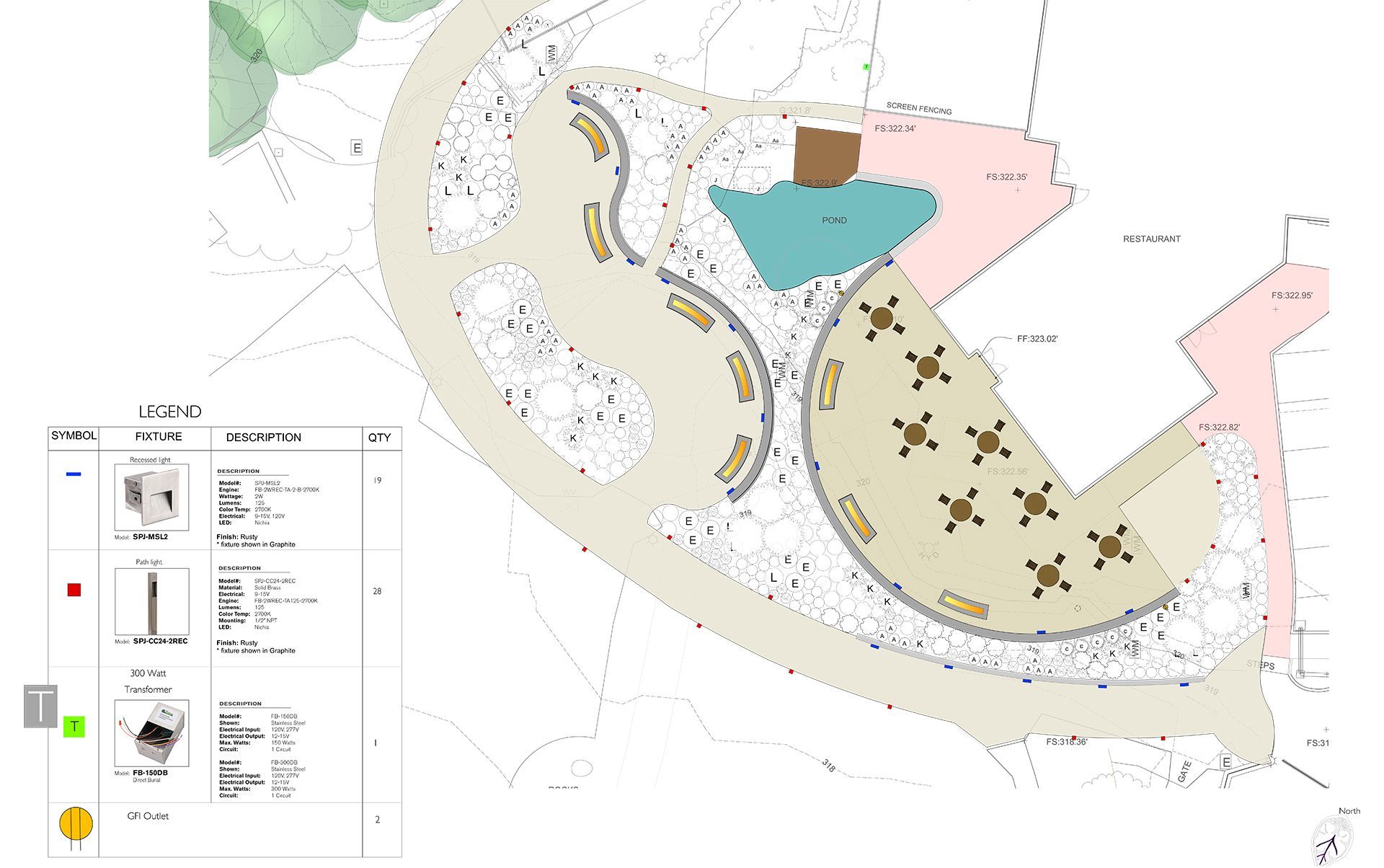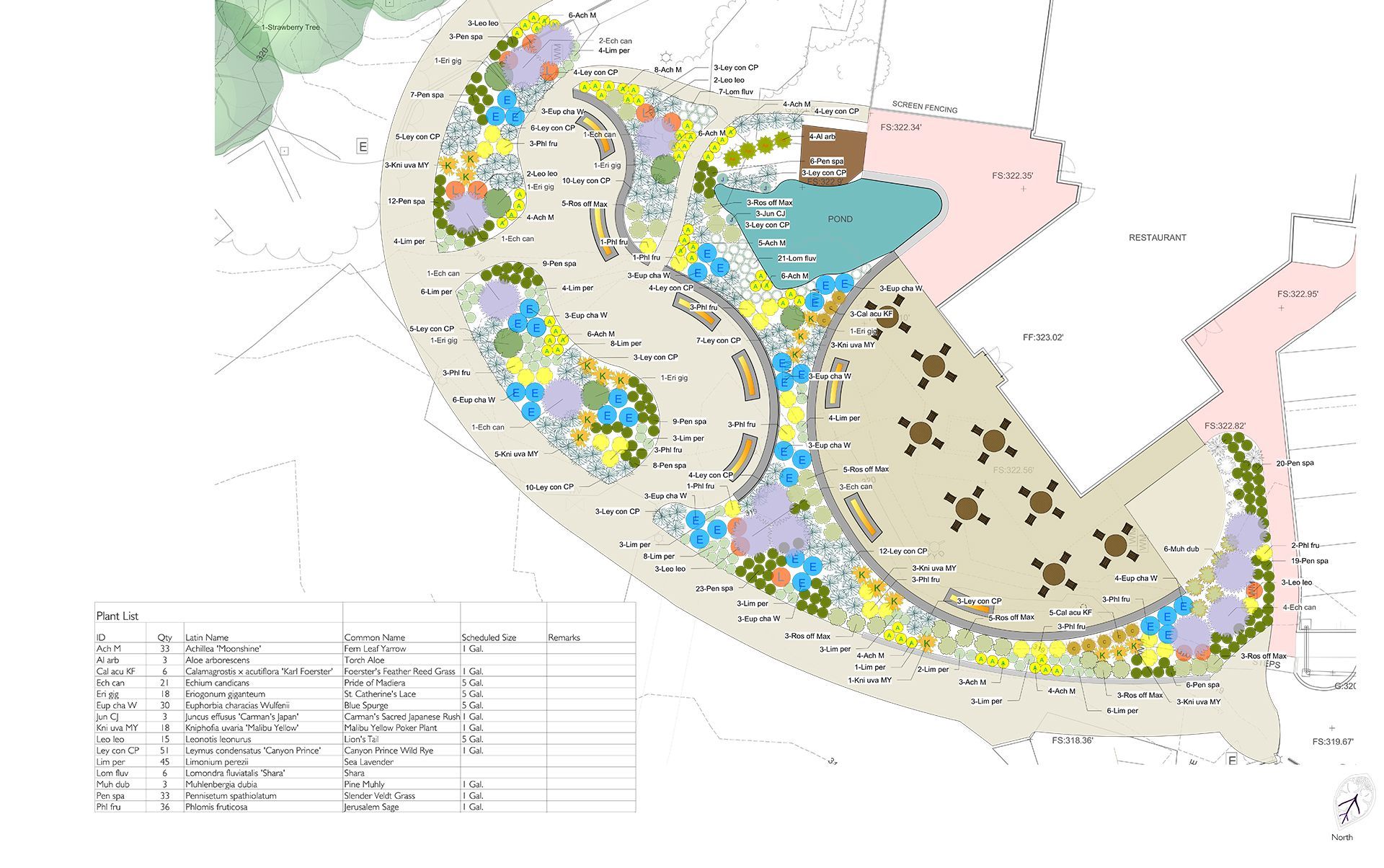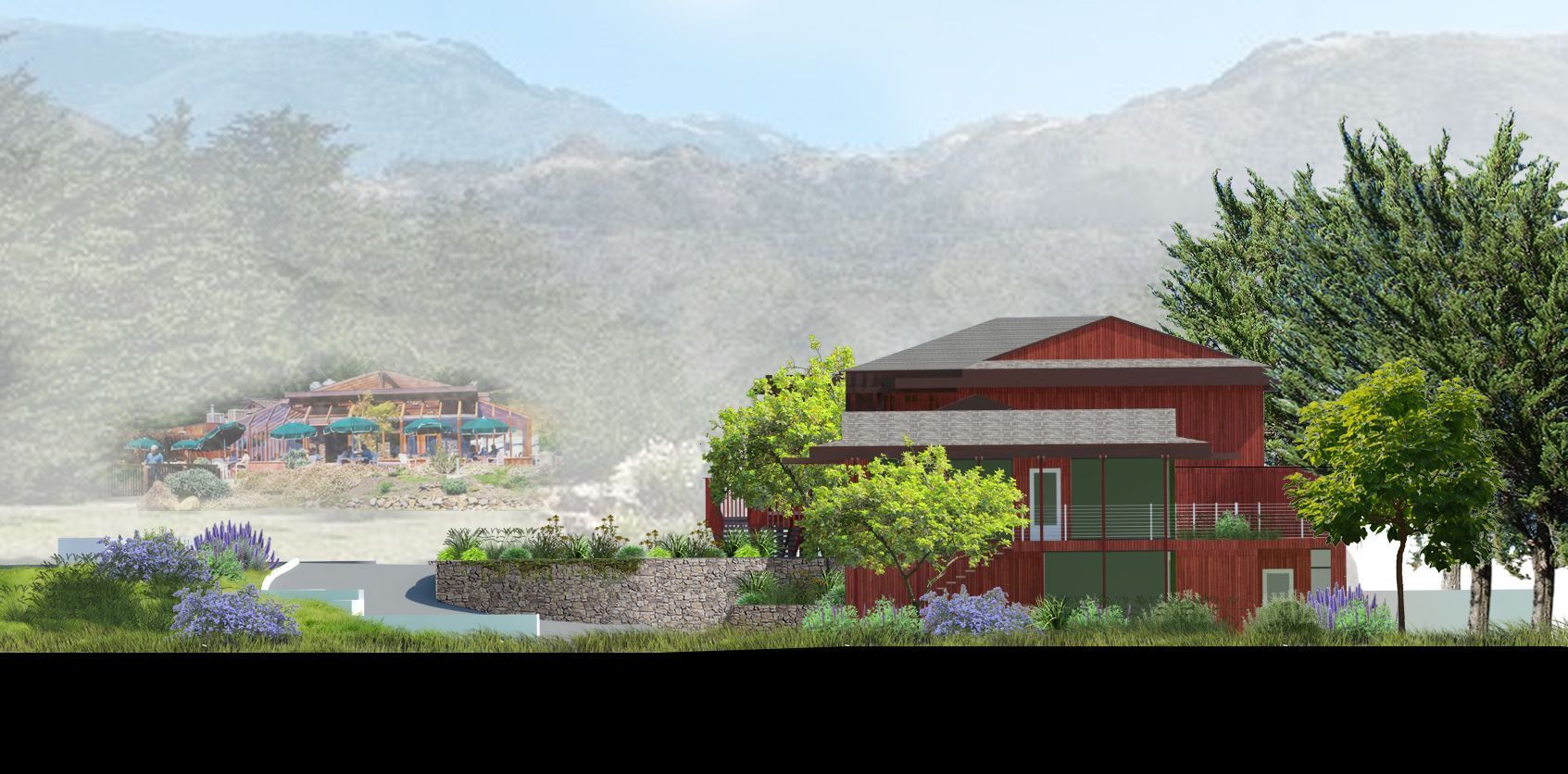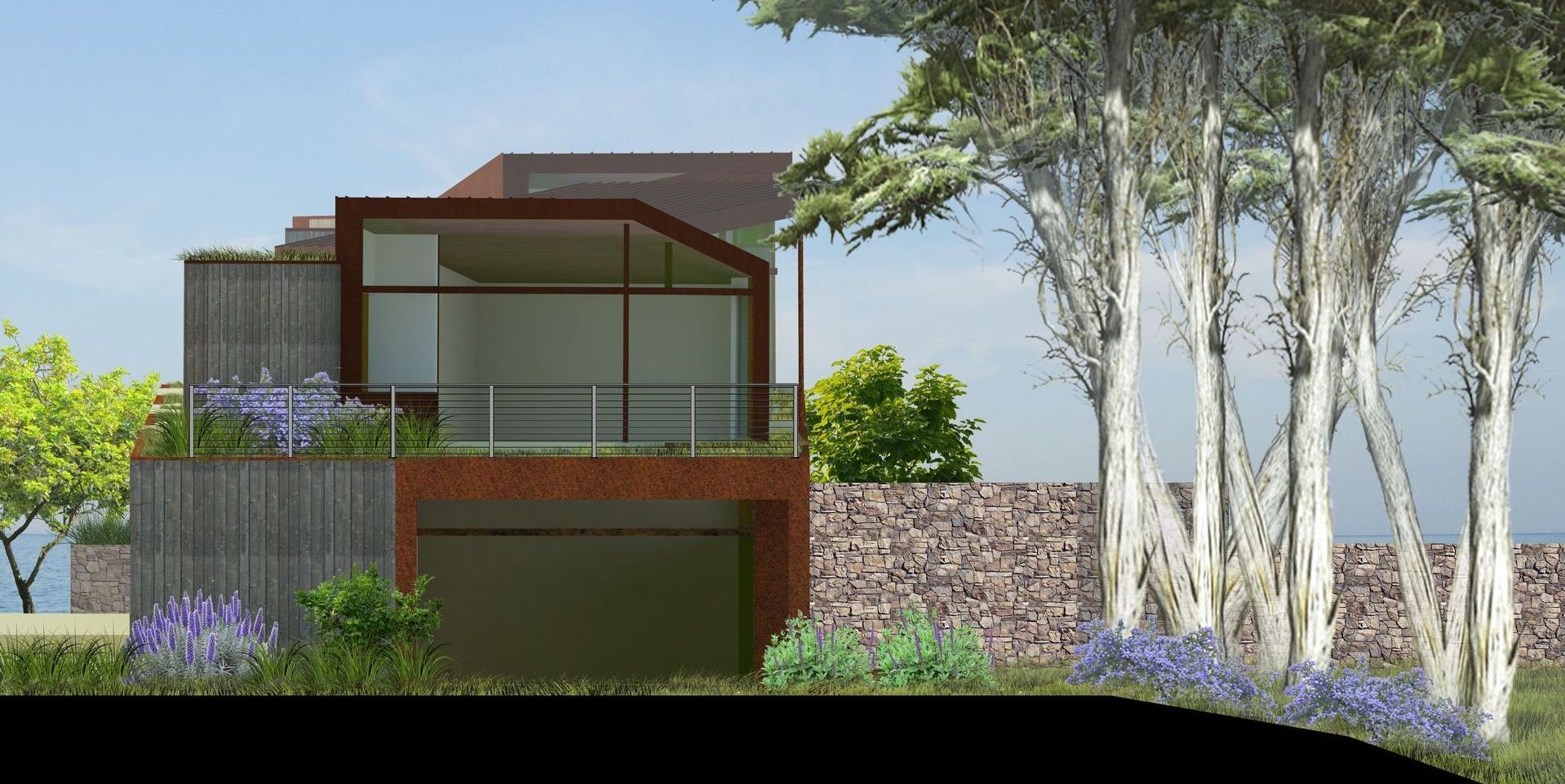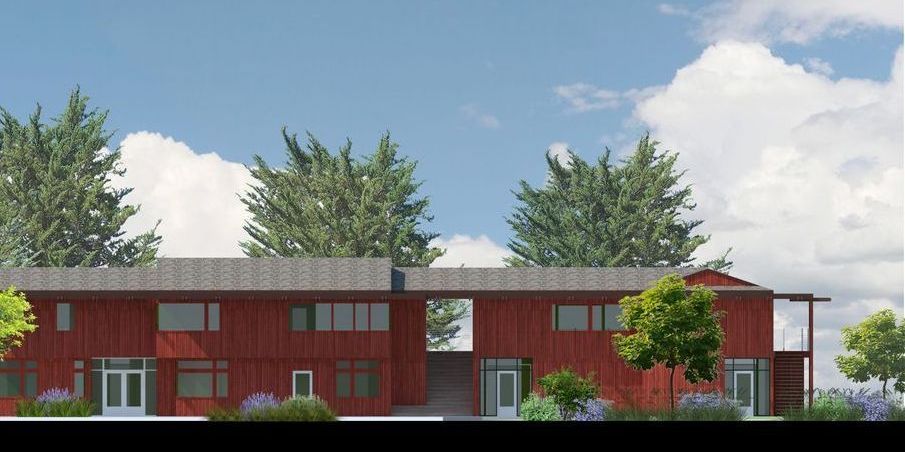New Paragraph
New Paragraph
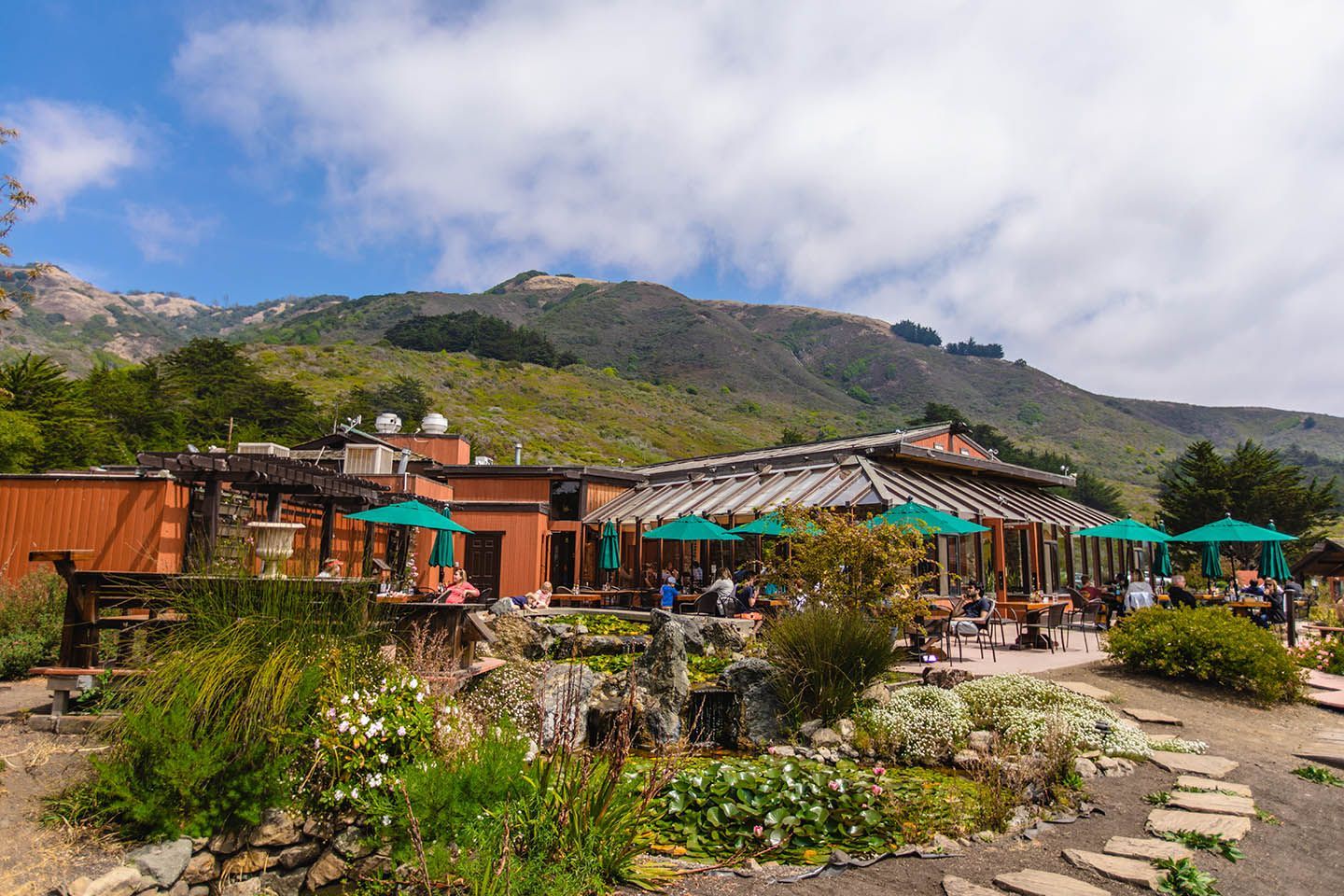
Slide title
Write your caption hereButton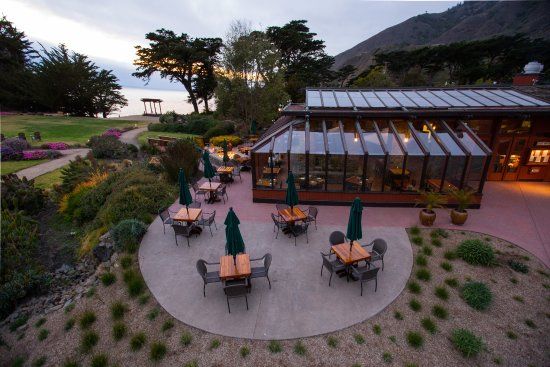
Slide title
Write your caption hereButton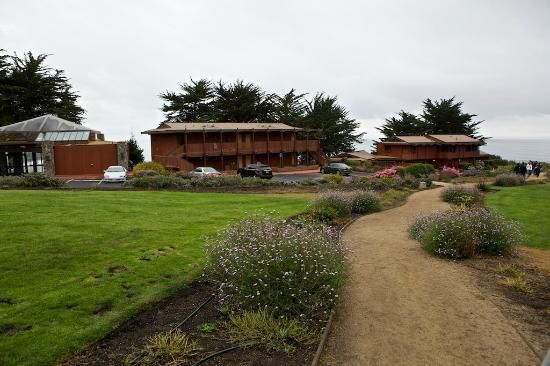
Slide title
Write your caption hereButton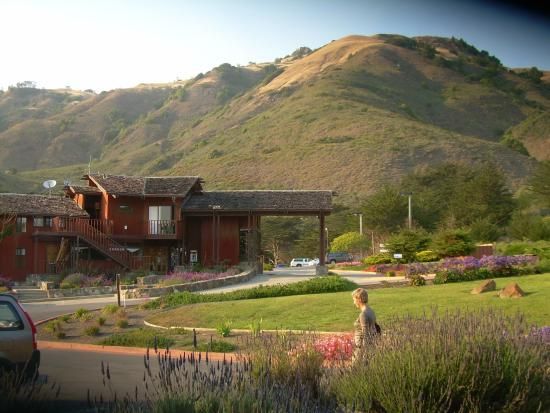
Slide title
Write your caption hereButton
Ragged Point Big Sur
-
Project Description
This project, which has been a multi-year design with architect Richard LeGros, is situated along the central coast of California. It reaches into the Pacific Ocean and is the headland to Big Sur known as Ragged Point. A place of serene natural beauty where land meets the sea, Ragged Point has attracted many visitors over the millennia; from native Chumash Indians to present day travelers. First inhabited over 5000 years ago as a seasonal encampment, the Chumash cherished the bounty provided by the land, and sea. The encampment was used continuously by the Chumash during the Spanish Mission Period; but was abandoned by the mid 1800’s. During the following decades, Ragged Point was a remote and wild place frequented by few. With the construction of California State Highway 1 during the 1930’s, Ragged Point became assessable to adventurous travelers.
The history of today’s Ragged Point began in 1961 when Mildred and Wiley Ramey purchased a tiny roadside food stand and gasoline station along a then lonely and lightly-traveled Highway 1. Over the next five and a half decades, Mr. and Mrs. Ramey, their children and grandchildren, have used their imagination and perseverance to realize their vision for Ragged Point Inn and Resort as the Gateway to Big Sur. As the number of travelers visiting Ragged Point increased, the Ramey family established ocean bluff top pathways, gardens, coastal access trails, motel lodgings,
parking areas and a variety of tourist-oriented businesses with the sole intent of sharing Ragged Point with the world.
Today the Family wishes to enhance Ragged Point Inn and Resort. Through refurbishment of the resorts’ original buildings and grounds; along with the judicious introduction of new guest rooms, gardens, outside dining and lounge patios, spas, gymnasium, and other amenities; the Ramey family remains committed to providing travelers with exceptional accommodations that celebrate the history and beauty of Ragged Point.
Ragged Point Big Sur
This project, which has been a multi-year design with architect Richard LeGros, is situated along the central coast of California. It reaches into the Pacific Ocean and is the headland to Big Sur known as Ragged Point. A place of serene natural beauty where land meets the sea, Ragged Point has attracted many visitors over the millennia; from native Chumash Indians to present day travelers. First inhabited over 5000 years ago as a seasonal encampment, the Chumash cherished the bounty provided by the land, and sea. The encampment was used continuously by the Chumash during the Spanish Mission Period; but was abandoned by the mid 1800’s. During the following decades, Ragged Point was a remote and wild place frequented by few. With the construction of California State Highway 1 during the 1930’s, Ragged Point became assessable to adventurous travelers.
The history of today’s Ragged Point began in 1961 when Mildred and Wiley Ramey purchased a tiny roadside food stand and gasoline station along a then lonely and lightly-traveled Highway 1. Over the next five and a half decades, Mr. and Mrs. Ramey, their children and grandchildren, have used their imagination and perseverance to realize their vision for Ragged Point Inn and Resort as the Gateway to Big Sur. As the number of travelers visiting Ragged Point increased, the Ramey family established ocean bluff top pathways, gardens, coastal access trails, motel lodgings,
parking areas and a variety of tourist-oriented businesses with the sole intent of sharing Ragged Point with the world.
Today the Family wishes to enhance Ragged Point Inn and Resort. Through refurbishment of the resorts’ original buildings and grounds; along with the judicious introduction of new guest rooms, gardens, outside dining and lounge patios, spas, gymnasium, and other amenities; the Ramey family remains committed to providing travelers with exceptional accommodations that celebrate the history and beauty of Ragged Point.
Ragged Point Big Sur
This project, which has been a multi-year design with architect Richard LeGros, is situated along the central coast of California. It reaches into the Pacific Ocean and is the headland to Big Sur known as Ragged Point. A place of serene natural beauty where land meets the sea, Ragged Point has attracted many visitors over the millennia; from native Chumash Indians to present day travelers. First inhabited over 5000 years ago as a seasonal encampment, the Chumash cherished the bounty provided by the land, and sea. The encampment was used continuously by the Chumash during the Spanish Mission Period; but was abandoned by the mid 1800’s. During the following decades, Ragged Point was a remote and wild place frequented by few. With the construction of California State Highway 1 during the 1930’s, Ragged Point became assessable to adventurous travelers.
The history of today’s Ragged Point began in 1961 when Mildred and Wiley Ramey purchased a tiny roadside food stand and gasoline station along a then lonely and lightly-traveled Highway 1. Over the next five and a half decades, Mr. and Mrs. Ramey, their children and grandchildren, have used their imagination and perseverance to realize their vision for Ragged Point Inn and Resort as the Gateway to Big Sur. As the number of travelers visiting Ragged Point increased, the Ramey family established ocean bluff top pathways, gardens, coastal access trails, motel lodgings,
parking areas and a variety of tourist-oriented businesses with the sole intent of sharing Ragged Point with the world.
Today the Family wishes to enhance Ragged Point Inn and Resort. Through refurbishment of the resorts’ original buildings and grounds; along with the judicious introduction of new guest rooms, gardens, outside dining and lounge patios, spas, gymnasium, and other amenities; the Ramey family remains committed to providing travelers with exceptional accommodations that celebrate the history and beauty of Ragged Point.
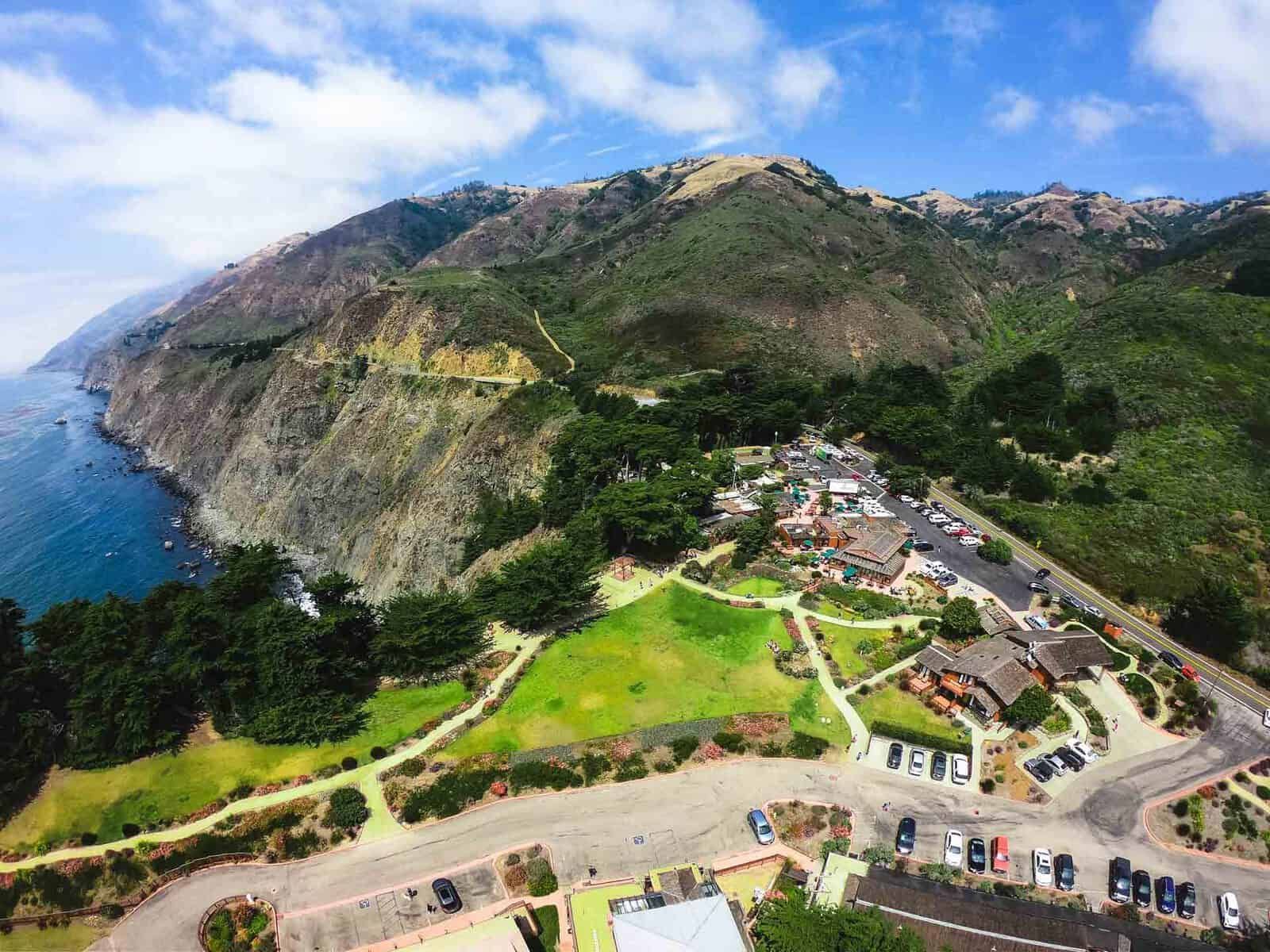
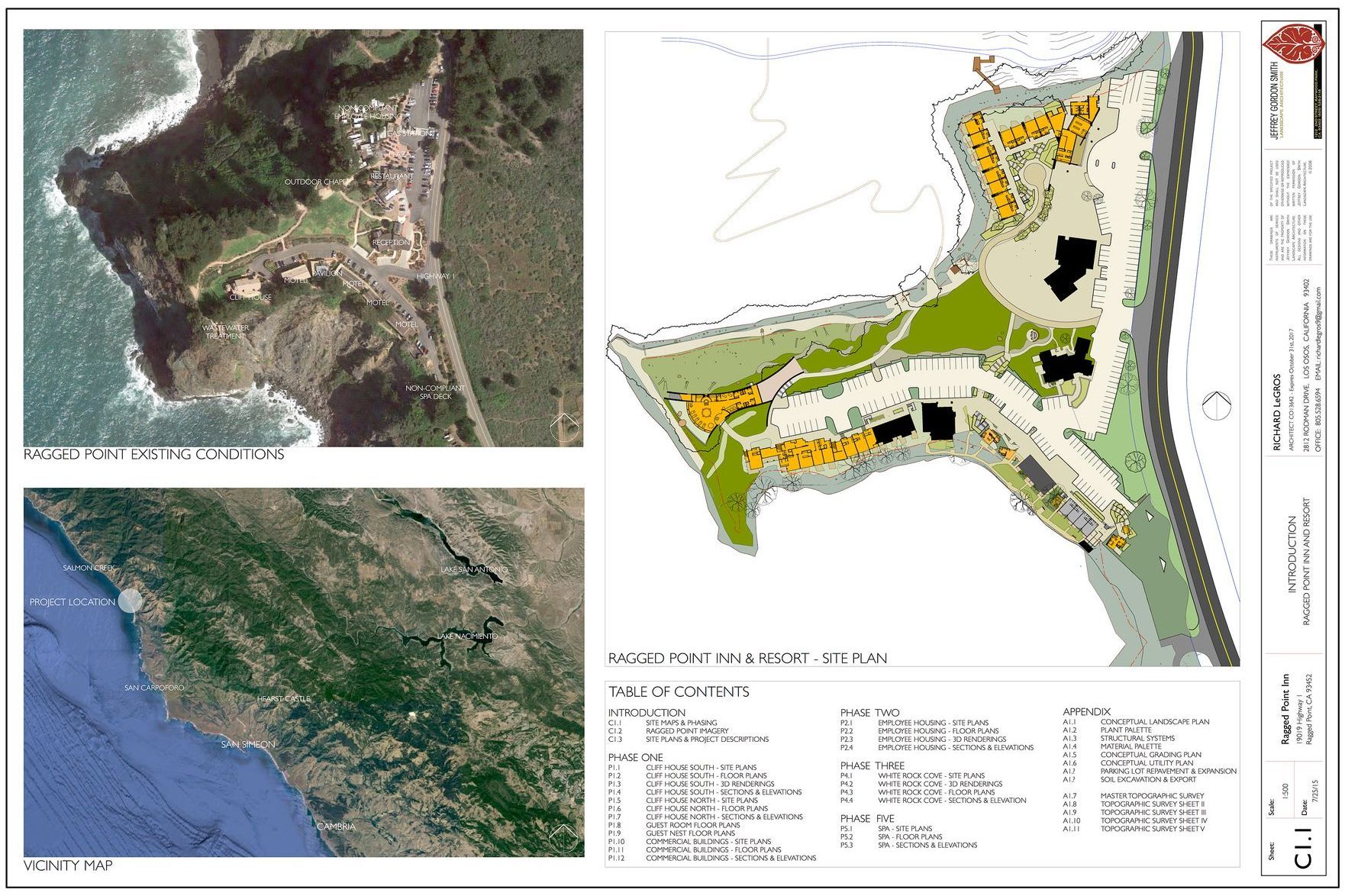
The process of designing Ragged Point has been a multi-year project. Designing an oceanside resort is an intricate and multifaceted endeavor, especially when it involves the redesign of an existing hotel that has withstood the test of time. Add to that the challenges and regulations imposed by county and coastal commission planning, and the complexity of the task becomes even more apparent. However, amidst these hurdles, the ultimate goal is to create a resort that not only reinvents itself but also respects and preserves the natural environment it calls home.
One of the foremost considerations in the design process is the integration of the resort with its coastal surroundings. The existing hotel may have been constructed decades ago without much thought given to environmental impact. Therefore, the redesign must strive to address any existing issues and implement sustainable practices to minimize the resort's carbon footprint. This may involve incorporating renewable energy sources, such as solar panels or wind turbines, and implementing energy-efficient systems throughout the resort's infrastructure.
Preserving the natural beauty of the beachfront location is paramount. While renovations are necessary, it's crucial to strike a balance between modernization and maintaining the resort's connection to its environment. This can be achieved through the use of eco-friendly building materials, such as reclaimed wood or recycled materials, and the incorporation of landscaping that blends seamlessly with the coastal surroundings. By harmonizing the resort's structures with the natural landscape, it becomes a part of the environment rather than an intrusive element.
Another key aspect of the design process is the creation of spaces that allow guests to immerse themselves in the serene coastal setting. This may involve the strategic placement of open-air common areas, such as outdoor lounges or dining spaces, where guests can enjoy panoramic views of the ocean while feeling the salty breeze on their skin. Additionally, nature-inspired elements such as water features, green spaces, and carefully selected indigenous plantings can enhance the connection between guests and the coastal ecosystem.
Respecting and protecting the local marine life is of utmost importance when designing an oceanside resort. The coastal commission planning process ensures that the resort's development aligns with regulations aimed at safeguarding the delicate balance of the marine ecosystem. This may involve implementing measures to prevent light pollution that could disrupt nesting habits of sea turtles, creating designated areas for water sports to minimize disturbance to marine habitats, or even integrating educational programs to raise awareness among guests about the importance of marine conservation.
Furthermore, a comprehensive waste management system should be put in place to mitigate the resort's impact on the coastal environment. This entails implementing recycling programs, reducing single-use plastics, and partnering with local organizations that specialize in coastal cleanup initiatives. By actively engaging in sustainable practices and educating both staff and guests about the importance of environmental stewardship, the resort can contribute to the preservation of the oceanside ecosystem it depends on.
The complexities of designing an oceanside resort that reinvents itself while respecting the environment are undeniable. It requires a deep understanding of the local ecosystem, meticulous attention to detail, and a commitment to sustainable practices. However, through careful planning, collaboration with regulatory bodies, and an unwavering dedication to environmental preservation, it is possible to create a resort that not only offers unparalleled guest experiences but also stands as a beacon of sustainable tourism. By seamlessly blending modern luxury with the pristine beauty of the coast, the redesigned resort can become a model for responsible development and a testament to the harmonious coexistence of human activities and the natural world.
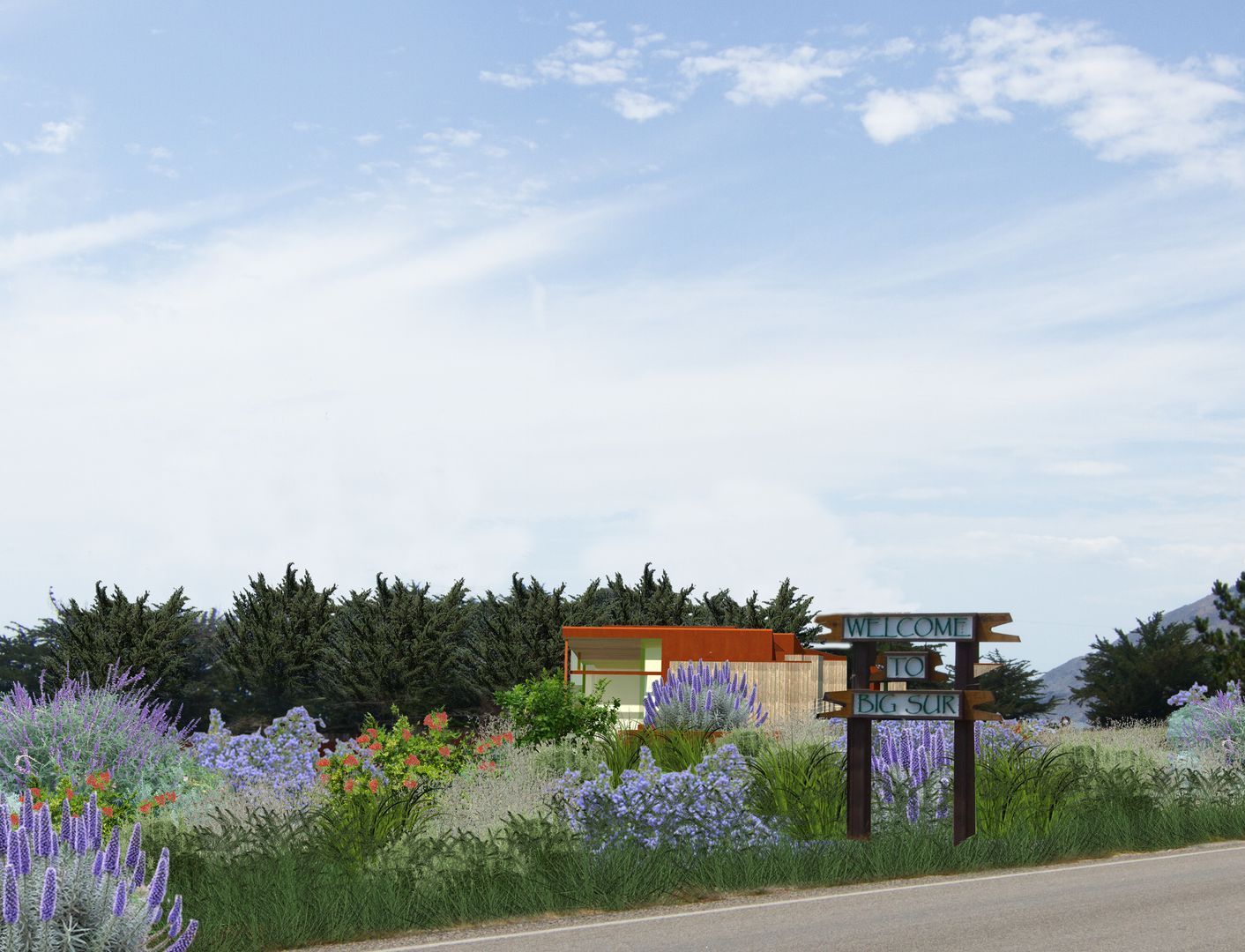

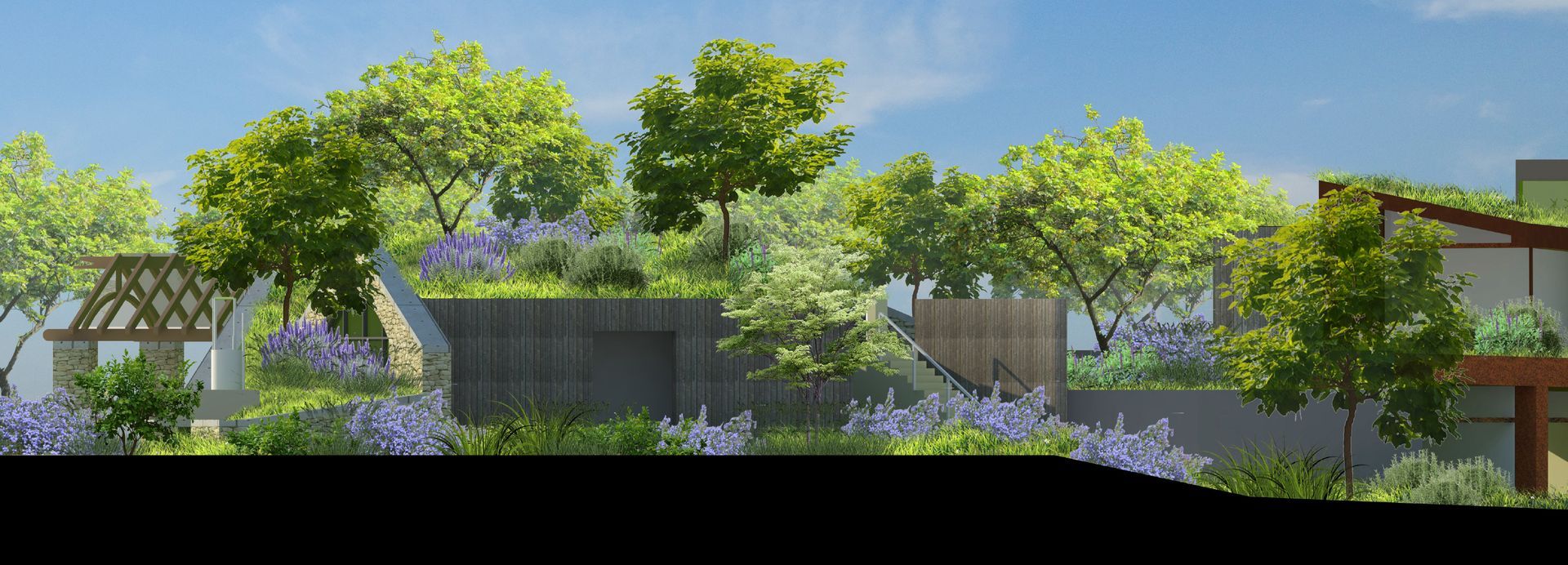
The commercial area currently on site is outdated and very small for the traffic that Ragged Point sees. The building integrates green roofs and sloping walls to help minimize the impact on the view and blend the resort buildings behind them.

Designing an oceanside resort is an intricate and multifaceted endeavor, especially when it involves the redesign of an existing hotel that has withstood the test of time. Add to that the challenges and regulations imposed by county and coastal commission planning, and the complexity of the task becomes even more apparent. However, amidst these hurdles, the ultimate goal is to create a resort that not only reinvents itself but also respects and preserves the natural environment it calls home.
One of the foremost considerations in the design process is the integration of the resort with its coastal surroundings. The existing hotel may have been constructed decades ago without much thought given to environmental impact. Therefore, the redesign must strive to address any existing issues and implement sustainable practices to minimize the resort's carbon footprint. This may involve incorporating renewable energy sources, such as solar panels or wind turbines, and implementing energy-efficient systems throughout the resort's infrastructure.
Preserving the natural beauty of the beachfront location is paramount. While renovations are necessary, it's crucial to strike a balance between modernization and maintaining the resort's connection to its environment. This can be achieved through the use of eco-friendly building materials, such as reclaimed wood or recycled materials, and the incorporation of landscaping that blends seamlessly with the coastal surroundings. By harmonizing the resort's structures with the natural landscape, it becomes a part of the environment rather than an intrusive element.
Another key aspect of the design process is the creation of spaces that allow guests to immerse themselves in the serene coastal setting. This may involve the strategic placement of open-air common areas, such as outdoor lounges or dining spaces, where guests can enjoy panoramic views of the ocean while feeling the salty breeze on their skin. Additionally, nature-inspired elements such as water features, green spaces, and carefully selected indigenous plantings can enhance the connection between guests and the coastal ecosystem.
Respecting and protecting the local marine life is of utmost importance when designing an oceanside resort. The coastal commission planning process ensures that the resort's development aligns with regulations aimed at safeguarding the delicate balance of the marine ecosystem. This may involve implementing measures to prevent light pollution that could disrupt nesting habits of sea turtles, creating designated areas for water sports to minimize disturbance to marine habitats, or even integrating educational programs to raise awareness among guests about the importance of marine conservation.
Furthermore, a comprehensive waste management system should be put in place to mitigate the resort's impact on the coastal environment. This entails implementing recycling programs, reducing single-use plastics, and partnering with local organizations that specialize in coastal cleanup initiatives. By actively engaging in sustainable practices and educating both staff and guests about the importance of environmental stewardship, the resort can contribute to the preservation of the oceanside ecosystem it depends on.
The complexities of designing an oceanside resort that reinvents itself while respecting the environment are undeniable. It requires a deep understanding of the local ecosystem, meticulous attention to detail, and a commitment to sustainable practices. However, through careful planning, collaboration with regulatory bodies, and an unwavering dedication to environmental preservation, it is possible to create a resort that not only offers unparalleled guest experiences but also stands as a beacon of sustainable tourism. By seamlessly blending modern luxury with the pristine beauty of the coast, the redesigned resort can become a model for responsible development and a testament to the harmonious coexistence of human activities and the natural world.


Designing a resort on California's coast comes with a unique set of challenges, particularly when it involves navigating the intricacies of the California Coastal Commission. The commission plays a crucial role in protecting and preserving the state's valuable coastal resources, making the approval process complex and demanding for resort developers.
One of the primary challenges faced by designers is ensuring compliance with the Coastal Act, a landmark legislation enacted to safeguard the coastal environment. The Coastal Act places strict regulations on coastal development, aiming to strike a delicate balance between meeting societal needs and preserving the ecological integrity of the coastline. This means that resort designers must carefully navigate through a myriad of guidelines and restrictions to ensure their plans align with the commission's vision for sustainable coastal development.
The Coastal Commission's jurisdiction covers a wide range of issues, including land use, public access, visual resources, and protection of marine habitats. Each aspect presents its own unique challenges. For instance, designers must ensure that the resort's footprint and construction activities do not encroach upon sensitive habitats or disrupt the natural flow of coastal ecosystems. This may require extensive environmental impact assessments, mitigation measures, and preservation efforts to safeguard endangered species and their habitats.
Public access is another critical consideration when designing a resort along California's coast. The Coastal Act emphasizes the importance of providing public access to beaches, trails, and other coastal areas. Resort developers must work closely with the Coastal Commission to ensure that public access is not impeded or compromised by the resort's development. This can be particularly challenging when balancing the privacy and exclusivity desired by resort guests with the public's right to enjoy and experience the coastline.
The visual impact of the resort is yet another aspect that designers must carefully address. The Coastal Commission places significant importance on preserving the scenic beauty of the coastline and minimizing any adverse visual impacts that may result from new developments. This can involve adhering to height restrictions, utilizing low-profile architecture, or employing design strategies that blend harmoniously with the natural landscape. Achieving a visually pleasing design that respects the character of the coastal environment can be a complex task that requires a deep understanding of the local aesthetic and engagement with the Coastal Commission.
Furthermore, the California Coastal Commission is known for its rigorous review process and extensive public involvement. The commission holds public hearings and solicits public input on proposed developments, giving local communities and environmental organizations a platform to voice their concerns and opinions. Resort designers must be prepared to engage in a robust dialogue with the commission, address community concerns, and potentially modify their plans to accommodate the interests of various stakeholders.
The Coastal Commission's commitment to environmental protection and public access is commendable, but it also adds layers of complexity to the resort design process. Resort developers must carefully navigate through a web of regulations, engage in extensive environmental assessments, and collaborate closely with the commission and the community to obtain the necessary approvals for their projects.
Despite these challenges, the stringent regulations and review processes enforced by the Coastal Commission ultimately contribute to the preservation of California's breathtaking coastline. By working in harmony with the commission's vision and goals, resort designers can create sustainable, visually appealing, and socially responsible developments that offer guests an exceptional coastal experience while safeguarding the natural beauty and ecological integrity of the California coast. Part of that responsibility is ensuring that the view sheds are protected.
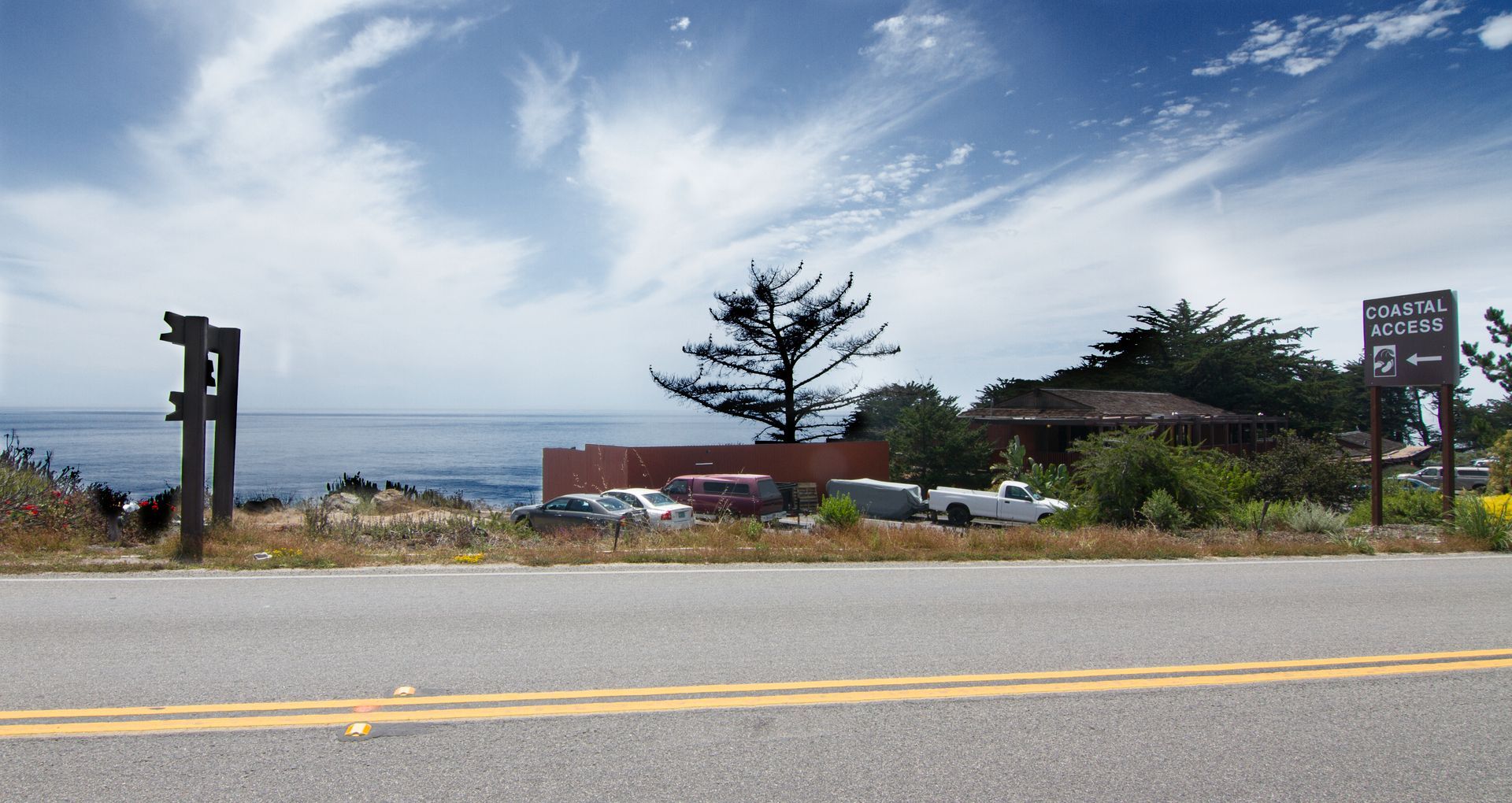
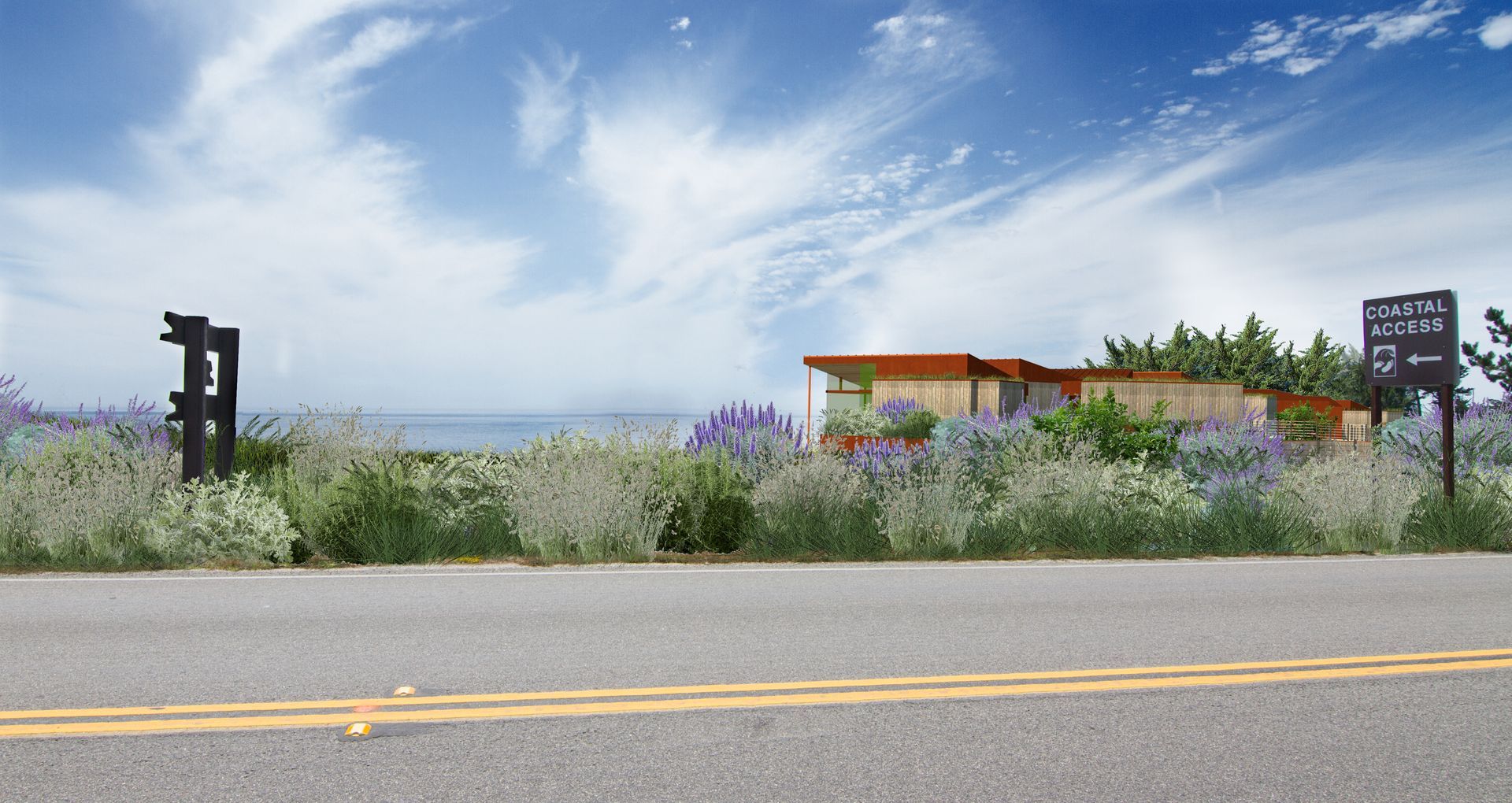
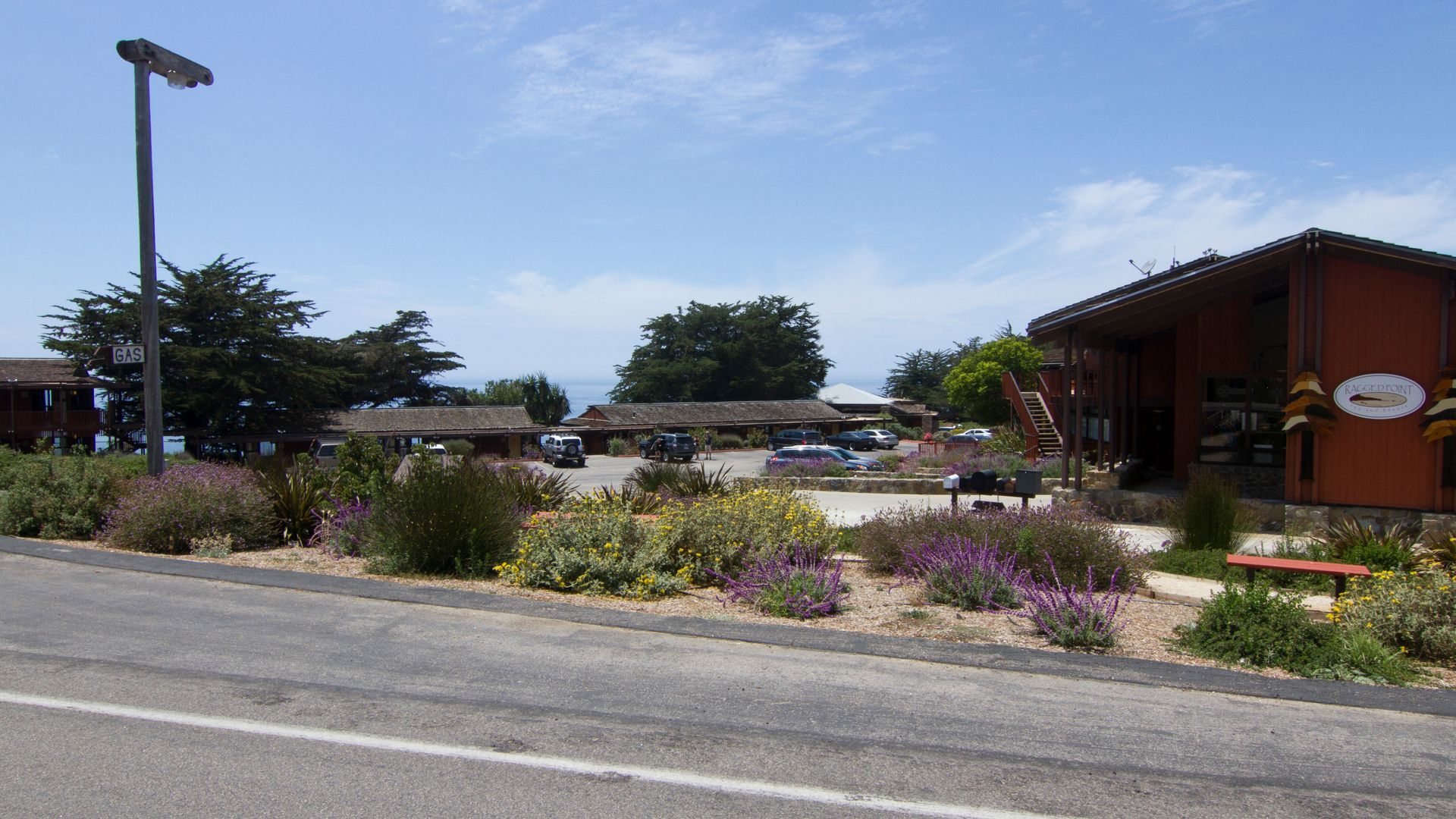
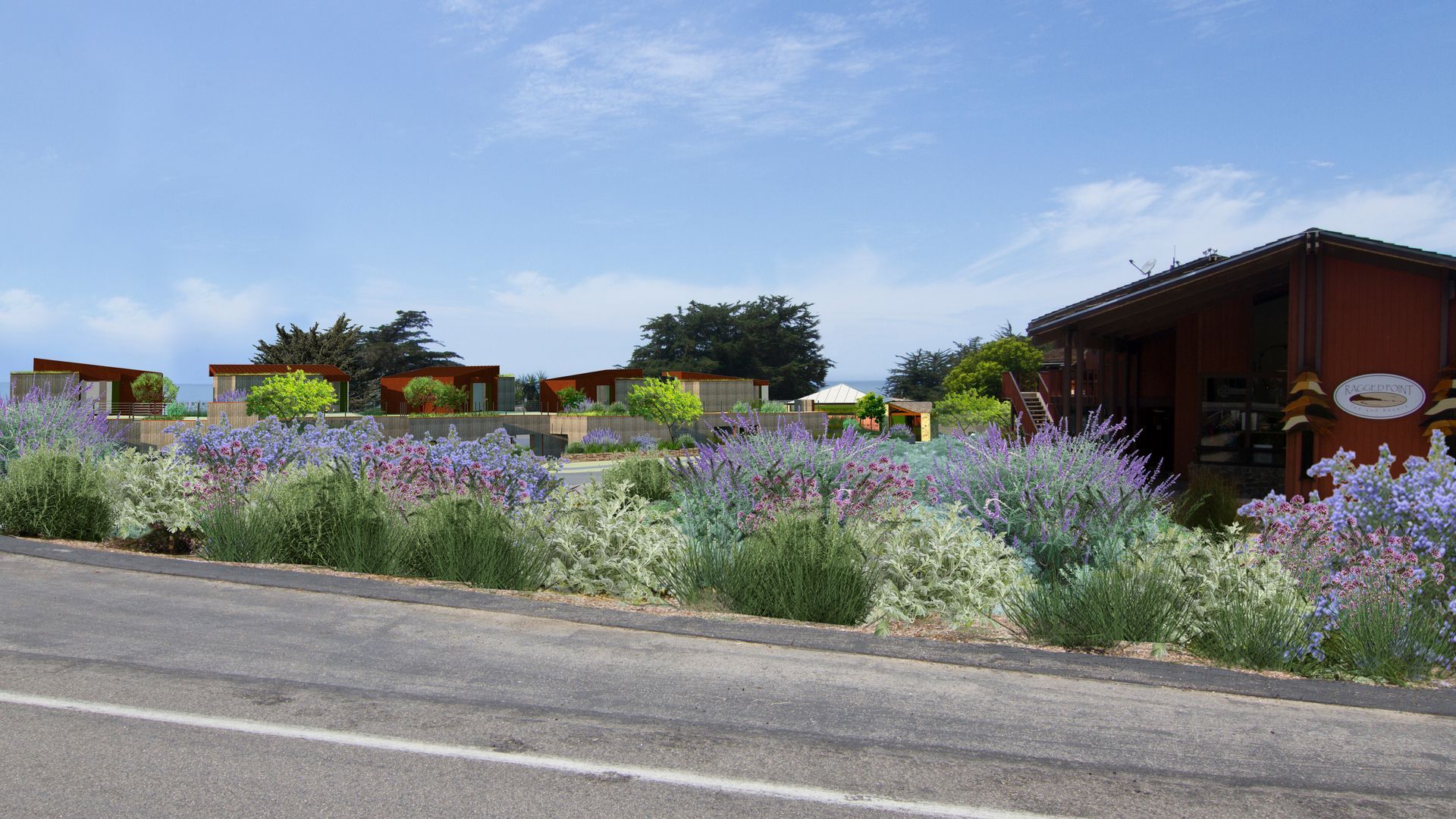
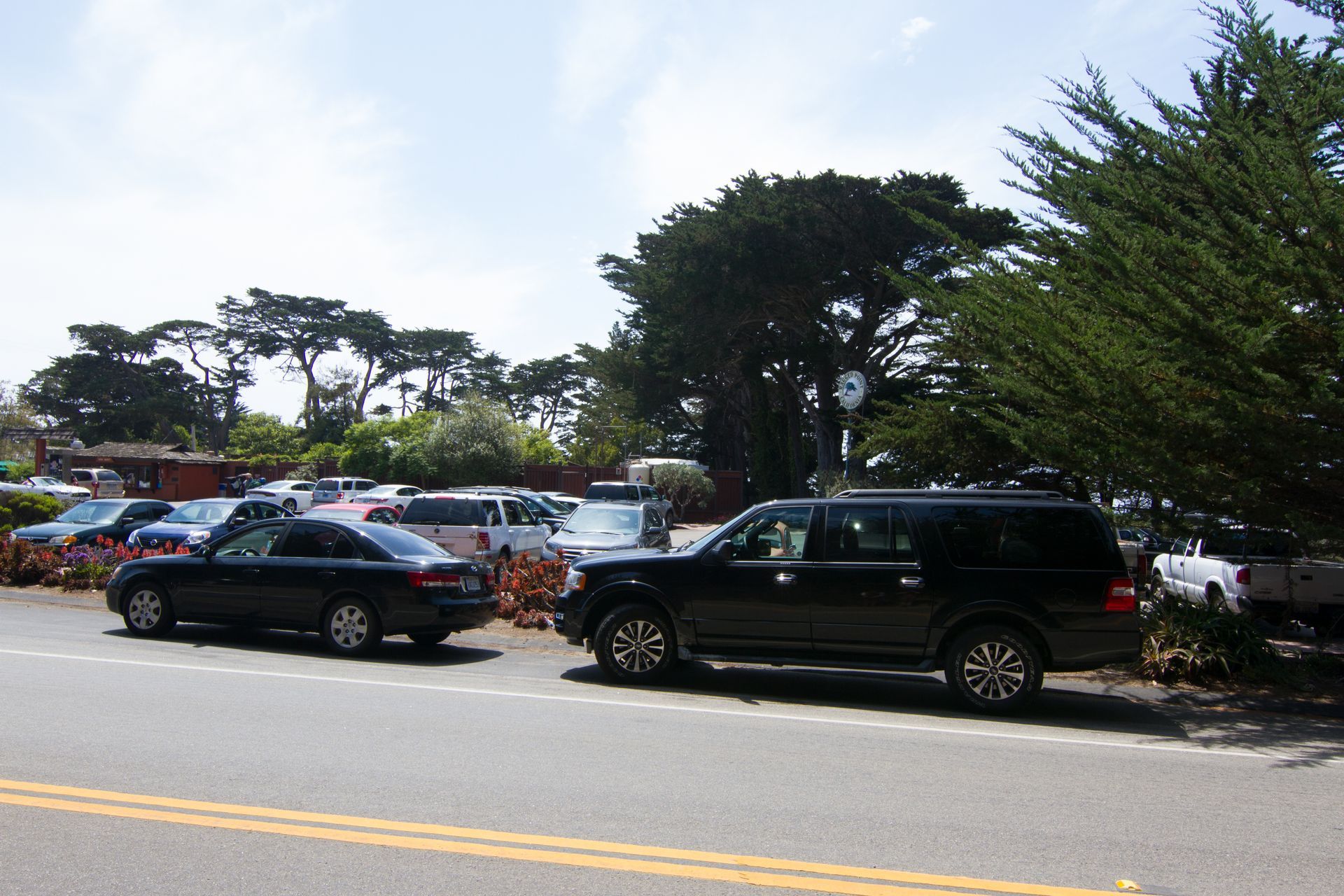
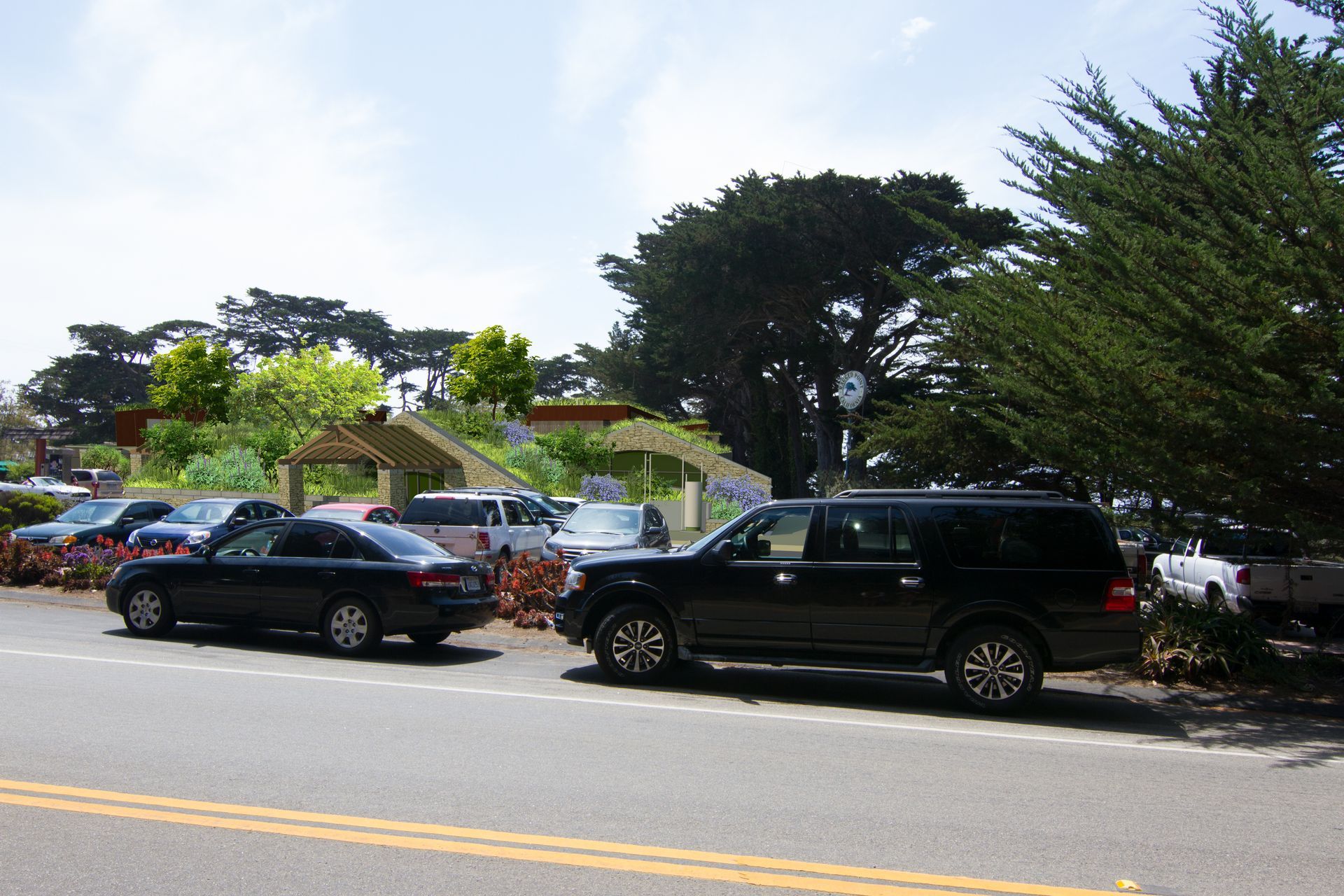

The commercial area currently on site is outdated and very small for the traffic that Ragged Point sees. The building integrates green roofs and sloping walls to help minimize the impact on the view and blend the resort buildings behind them.


The commercial area currently on site is outdated and very small for the traffic that Ragged Point sees. The building integrates green roofs and sloping walls to help minimize the impact on the view and blend the resort buildings behind them.



The restaurant at Ragged Point went through many design iterations, from full redesign, extensions, to ultimately keeping the existing structure. The patio was extended further out and multiple fire pits were added for the cooler evenings. The lower fire pit area is situated further back from the path to allow separation from the footpath, while also taking the breathtaking views of the Pacific Ocean.
